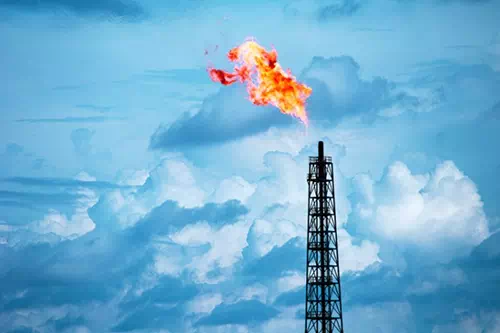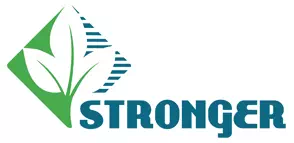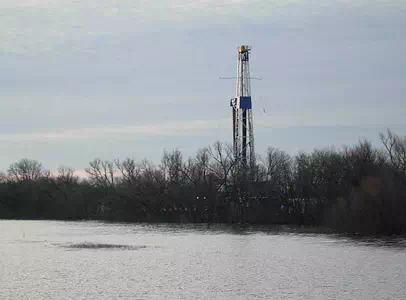

Clean Water Act The Clean Water Act (CWA) regulates the discharge of pollutants to waters of the U.S under the National Pollutant Discharge Elimination System (NPDES), among others. NPDES state or EPA permits contain industry specific, technology based and water quality based limits and establish pollutant monitoring and reporting requirements. The objective of the Clean Water Act, stated in Section 101, is to “restore and maintain the chemical, physical, and biological integrity of the Nation’s waters. The Environmental Compliance Information for Energy Extraction (ECIEE) Portal contains information on the following topics related to the CWA::
Applicability of CWA to Land Based Oil and Natural Gas Extraction and Production Sector It is up to each facility to understand its responsibilities under the CWA in each individual case. For guidance purposes only, a listing has been developed of those CWA statutes, regulations or guidance which could apply to facilities engaged in oil and/or gas exploration, extraction, well completion or workover, production, or transmission. To see the list of applicable statutes, click here. As authorized by the Clean Water Act and to implement the national goal of zero discharge, the National Pollutant Discharge Elimination System (NPDES) permit program controls water pollution by regulating point sources that discharge pollutants into waters of the United States. Since its introduction in 1972, the NPDES permit program is responsible for significant improvements to our Nation's water quality. The CWA prohibits the unauthorized discharge of pollutants into waters of the U.S. Owners and operators of facilities that discharge pollutants into waters of the U.S. may gain authorization by first obtaining an NPDES permit. An NPDES permit contains limits on what you can discharge, monitoring, recordkeeping and reporting requirements, and other provisions to ensure that the discharge does not harm water quality or people's health. In essence, the permit translates general requirements of the Clean Water Act into specific provisions tailored to the operations of each facility's discharging pollutants. Facilities that discharge pollutants into a municipal sanitary sewer system, do not need an NPDES permit. However, as an indirect discharger, facilities must ask the municipality about any pretreatment permit requirements. Pretreatment regulations, which apply to any industrial discharge to a publicly owned treatment works, prohibit the discharge of any trucked or hauled waste into a municipality's sewer system or at the wastewater plant except at discharge points designated by the municipality. In addition, if the discharge interferes with or passes through the wastewater plant and causes a violation of the municipality's NPDES permit, the facility may be in violation of the Pretreatment regulations. Pretreatment regulations are located at 40 CFR 403. For more information on NPDES permits relative to the natural gas extraction sector, click here.
Pollutants regulated under the CWA include "priority pollutants," including specific toxic pollutants (126 metals; "conventional" pollutants, such as biochemical oxygen demand (BOD), total suspended solids (TSS), fecal coliform, oil and grease, and pH; and "non-conventional" pollutants, including any pollutant not identified as either conventional or priority). The CWA gives EPA the authority to set effluent limits. Permit writers develop technology-based effluent limits that are based on the performance of available treatment technologies. If the technology-based effluent limits are not sufficient to ensure water quality standards of the receiving water will be met, permit writers are required to develop more stringent water quality based effluent limits. See CWA §303(b)(1)(c) and 40 CFR 122.44(d ). In addition, under CWA §402(o), NPDES permits cannot be reissued with effluent limits that are less stringent than current permit limits, unless certain exceptions are met. The CWA requires most owners or operators of facilities that discharge pollutants to first obtain a National Pollution Discharge Elimination System (NPDES) permit, or else that discharge may be unauthorized. EPA has promulgated effluent limit guidelines specific to the oil and gas extraction point source category: https://www.epa.gov/eg/oil-and-gas-extraction-effluent-guidelines. Direct Discharges. Direct discharges come from point sources, which are discrete conveyances such as pipes, man-made ditches, channels, tunnels, conduits, well, discrete fissure, container, rolling stock, concentrated animal feeding operation, landfill leachate collection system, vessel, or other floating craft from which pollutants are or may be discharged. Individual homes that are connected to a municipal system, use a septic system, or do not have a surface discharge do not need an NPDES permit; however, industrial, municipal, and other facilities must obtain permits if their discharges go directly to waters of the U.S. Indirect Discharges. Another type of discharge that is regulated by the CWA is a discharge that goes to a publicly owned treatment works (POTW). The National Pretreatment Program (CWA Section 307(b)) controls the indirect discharge of pollutants to a POTW by "industrial users." Facilities regulated under Section 307(b) must meet certain pretreatment standards. The goal of the pretreatment program is to protect municipal wastewater treatment plants from damage that may occur when hazardous, toxic, or other wastes are discharged into a sewer system and to protect the quality of sludge generated by these plants. Discharges to a POTW can be regulated by the POTW itself, a state or EPA. However, these discharges are handled primarily by the POTW itself, rather than the state/tribe or EPA. EPA has developed general pretreatment standards and technology-based standards for industrial users of POTWs in many industrial categories. "Categorical" pretreatment standards, applicable to an industry on a nationwide basis, are developed by EPA. Different standards may apply to existing and new sources within each category. Local limits that are at least as stringent as the national standards can be developed by the POTW to help the POTW achieve the effluent limitations in its NPDES permit. For more information on Produced Water Discharges, click here. Stormwater discharges are regulated under EPA's National Pollutant Discharge Elimination System Stormwater Program and authorized state programs. Most stormwater discharges are considered point sources, and operators of these sources may be required to obtain a NPDES permit before they can discharge stormwater. The NPDES Stormwater Program regulates the following types of stormwater discharges:
For more information on Stormwater Discharges relative to the oil and natural gas extraction sector, click here. Section 404 of the Clean Water Act authorizes the Army Corps of Engineers (Corps) to grant permits for the discharge of dredged or fill material to waters of the U.S., including wetlands. In deciding whether to grant or deny a permit, the Corps must follow certain guidelines. The Army Corps of Engineers reviews permit applications for the discharge of dredged or fill material to determine if practical alternatives to the project exist. They also require mitigation and perform a public interest review. The Corps also determines if other environmental laws must be addressed. If the Corps' review reveals that the project should not proceed, they have the authority to either deny or condition the project. Then, under CWA Section 401 authority, state agencies review the permit application, looking closely at potential water quality impacts. When warranted, the states grant "Section 401 certification," which is needed before a Section 404 permit can be issued by the Corps. For more information on Waterbody/Wetlands Protection relative to the oil and natural gas extraction sector, click here. Oil Pollution Regulation: Spill Prevention, Control and Countermeasure (SPCC) and the Facility Response Plan (FRP) Rule Requirements Originally published in 1973 under the authority of Section 311 of the FWPCA (Federal Water Pollution Control Act), the Oil Pollution Prevention regulation (40 CFR part 112) sets forth requirements for prevention of oil discharges at specific non-transportation-related facilities. To prevent oil from reaching navigable waters or adjoining shorelines, and to contain discharges of oil, the regulation requires these facilities to develop and implement Spill Prevention, Control, and Countermeasure (SPCC) Plans. Mixtures of oil and water (such as produced water, i.e., oil and gas extraction wastewater) are considered oil for this program. The Oil Pollution Prevention regulation is federally implemented only i.e., CWA §311 does not authorize states and tribes to run the program. In 1990, the Oil Pollution Act amended the Clean Water Act, resulting in new regulatory requirements in 40 CFR part 112 for oil storage facilities that could reasonably cause substantial harm to the environment to develop Facility Response Plans (FRPs). An FRP is a plan for responding, to the maximum extent practicable, to a worse case discharge, and to a substantial threat of such a discharge of oil. The Plan also includes responding to small and medium discharges as appropriate. For more information on Oil Pollution Regulation relative to the oil and natural gas extraction sector, click here. CWA State, Tribal, and Territory Authorization Under the CWA, EPA may authorize states, territories, or tribes to implement all or parts of the national NPDES program and the CWA Section 404 permit program. Once authorized, states, territories, or tribes perform the permitting, administrative, and enforcement aspects of the NPDES program, however, EPA still retains oversight responsibilities and enforcement authority. Authorized states, territories, and tribes may contain requirements that are more stringent than federal standards. Note that states, territories and tribes cannot implement the federal oil pollution prevention program. For additional information on the authorization process and the status of authorized state, territory, and tribal programs, click here. Visit the Indian Country Resources page for more information on engaging in oil and natural gas extraction activities in Indian country.
|
Funded by EPA through a Cooperative Agreement
|
 |
||
About | Technical Topics | Federal Statutes & Regulations - US EPA | Federal Statutes & Regulations - Non-EPA | Emergency Response |
|
EPA Resources | State/Local Resources | Other Resources | Acronyms | Search | Disclaimer | Home




